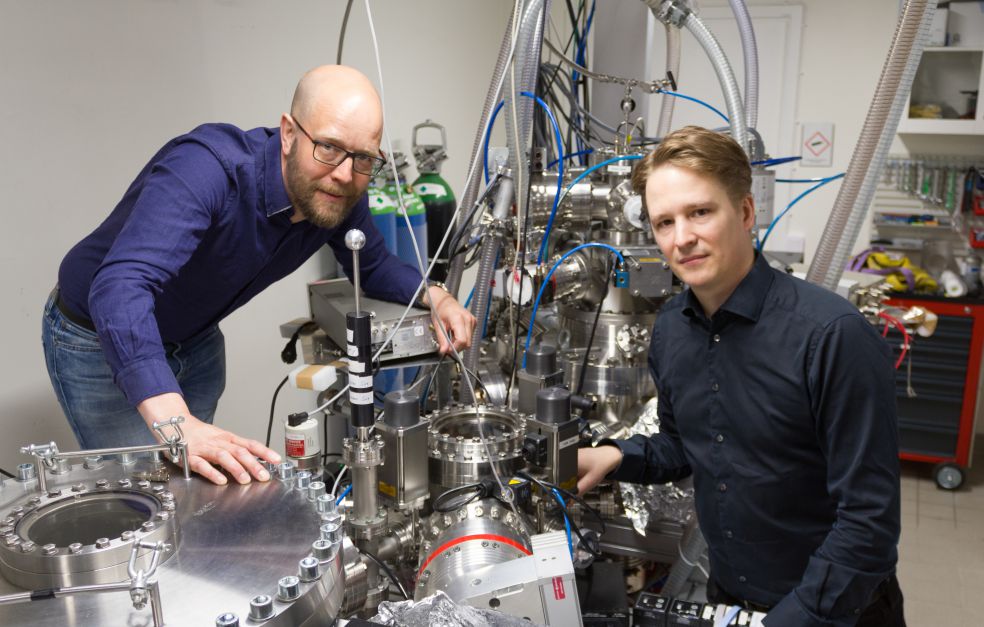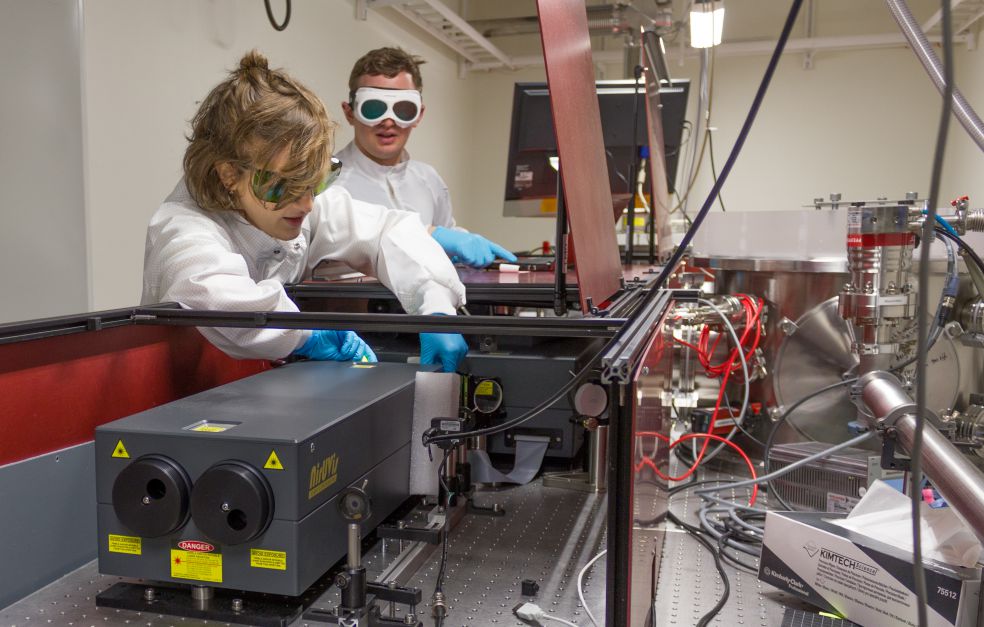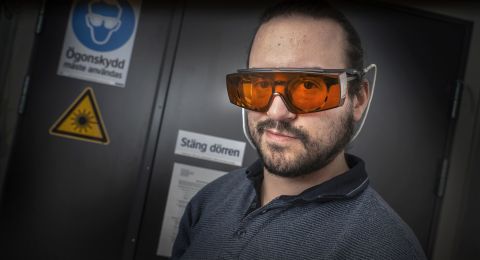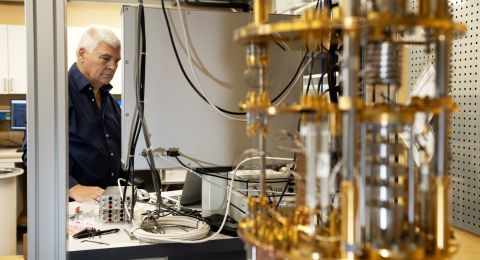
Project Grant 2020
Combining intense extreme ultraviolet and relativistic electron pulses for novel attosecond experiments
Principal investigator:
Per Eng-Johnsson, Professor of Atomic, Molecular and Optical Physics
Co-investigators:
Lund University
Olle Lundh
Anne L'Huillier
Claes-Göran Wahlström
Chalmers University of Technology
Tünde Fülöp
Institution:
Lund University
Grant in SEK:
SEK 25.6 million over five years
“The only thing we’re fairly sure of is that we’re going to see some unexpected results. On time scales this short things stop behaving as expected,” says Per Eng-Johnsson, professor of atomic physics at Lund University.
He is heading a project, funded by Knut and Alice Wallenberg Foundation, whose goal is to do something completely new – to combine light pulses lasting only a few hundred attoseconds with electron pulses of roughly the same duration.
The time scale is unfathomably short; an attosecond is no more than a billionth of a billionth of a second. Light pulses this short enable the scientists to detect even the incredibly rapid motion of electrons.
“Usually electrons have time to move while a measurement is being made. But when we start to match the time scales in which they move, the situation is quite different – we can actually see how they move.”
High-order harmonics meet surfing electrons
Merely creating attosecond light pulses is a science in itself. Eng-Johnsson and his colleagues produce them by inducing high-intensity laser light to interact with the atoms in a gas so that high-order harmonics of light are formed in ultrashort pulses.
The lab next door is home to another research team using light from the same laser, this time to accelerate electrons. They are using an extremely powerful laser pulse to tear away electrons from the atomic nuclei in helium gas, and create a wave of plasma.
“Electrons in the vicinity start to surf on the plasma wave, forming a short electron pulse traveling almost at the speed of light,” researcher Olle Lundh explains.
Although their labs are right next to each other, the two research teams have been working independently of one another. But when Lund University decided to invest in an upgraded extremely high-power laser, new opportunities arose.
“This new laser has enough light to generate attosecond pulses and electrons simultaneously,” Eng-Johnsson says.
The teams now intend to combine their two techniques to achieve synergies. The idea is to send electron pulses through different materials, and use synchronized light pulses to study how the electrons in the material react to the ultrafast and powerful electrical fields created by the electron pulses.
“No one knows or has previously studied how materials respond to such strong and short-lived electrical fields. The fields will shift so quickly that the electrons in the material shouldn’t be able to keep up. That’s why we think something unexpected will happen, but we don’t quite know what,” Eng-Johnsson comments.
The first step of the project is to make the electron pulses shorter. At present Lundh and his colleagues can create electron pulses that are a few femtoseconds long (a femtosecond = one thousand attoseconds), but to perform the planned experiments, they need to get down to a few hundred attoseconds. The researchers therefore intend to use attosecond pulses to monitor and measure the plasma that creates the electron pulses, which, in combination with computations made by theoretical plasma physicists at Chalmers University of Technology in Gothenburg, will add to their knowledge of how the length and shape of the electron pulses can be controlled via the plasma.
“Neither of the teams could do this without the other – we’d be completely lost without the different competencies. It’s going to be intriguing to see what we can achieve together,” says Eng-Johnsson.
Scrutinizing the moment
When the researchers have made the electron pulses short enough and controllable, they can start studying the materials. The first in line are thin films of aluminum. The researchers have already studied these materials using attosecond pulses, without the addition of electrical fields. They now want to see how the results are affected when the aluminum film is subjected to electron pulses. They plan to go on to study other materials, with a time resolution of just a few hundred attoseconds.
The optical properties of many materials are altered, e.g. in the way light is refracted, when they are exposed to an electrical field. Nowadays “electro-optic materials” of this kind are used in virtually all communication, where the light signals sent via fiber-optic cables are controlled with the help of electrical pulses.
“These days it’s assumed that material properties change instantaneously when you switch on an electrical field. But it probably doesn’t happen immediately if you apply a really high time resolution. If we can understand the processes that take place when material properties change, we may eventually also learn how to control them,” Eng-Johnsson says.
The project involves pure scientific research. Its main aim is to increase our knowledge of how light, electrons and matter interact with each other over ultrashort time scales. It may eventually lay the foundations for new opportunities in photonics, for example, which inhabits the border zone between optics and electronics. And the truncated electron pulses can also be used to generate ultrashort X-ray pulses in other studies that require high time resolution.
Text Ingela Roos
Translation Maxwell Arding
Photo Marius Plach, Per Eng-Johnsson, Olle Lundh, Jonas Andersson





